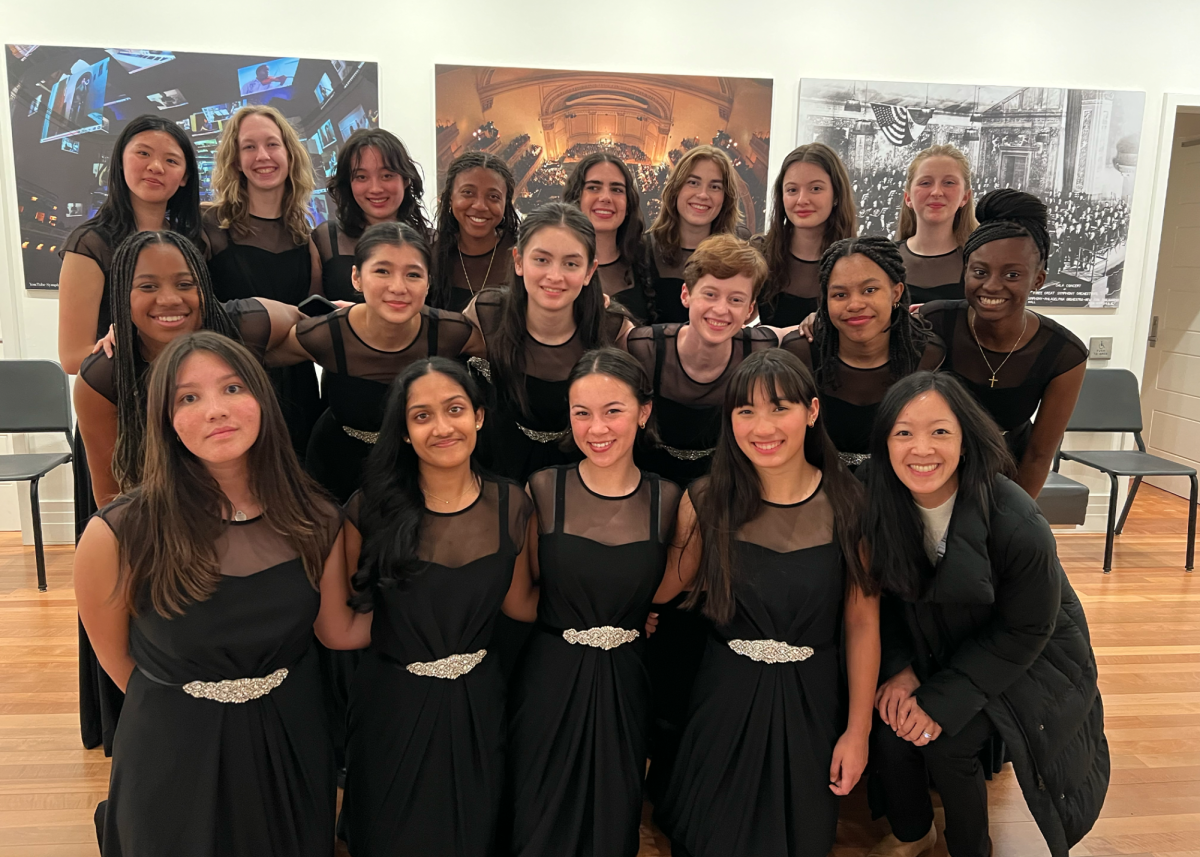 Faculty and students in Marlborough’s performing arts department devote countless hours to planning and practicing for each production; however, many students question whether the department devotes as much funding and time to dance as to theater. According to Performing Arts Department Head Anne Scarbrough, the yearly budget for Dance Dimensions, Marlborough’s selective and competitive dance program, is generally lower than that of the theater department’s plays and musicals. Talk amongst students has created growing concerns that this allows the theater program to dominate the department through higher quality costumes and props, and more performances per year.
Faculty and students in Marlborough’s performing arts department devote countless hours to planning and practicing for each production; however, many students question whether the department devotes as much funding and time to dance as to theater. According to Performing Arts Department Head Anne Scarbrough, the yearly budget for Dance Dimensions, Marlborough’s selective and competitive dance program, is generally lower than that of the theater department’s plays and musicals. Talk amongst students has created growing concerns that this allows the theater program to dominate the department through higher quality costumes and props, and more performances per year.
The major factors in deciding the department’s yearly budgets for dance and theater include costumes, number of performances, number of actresses or dancers, set design and construction. According to Scarbrough, the department is generally able to work together as a unit to meet the financial needs of theater and dance for each production.
“We’re really well resourced; that said there are always situations where we’ve said, ‘if we just had this much more money, we could do this,’ and that’s always going to be the case. I think there are few complaints about the production resources,” Scarbrough said.
Scarbrough explained the difference in budget between dance and theater, attributing the gap to the greater quantity of students involved in theater, the higher prices of theater costumes, the more lavish sets used in theatre productions, and the payment of rights and royalties for each play. However, not everyone in the Marlborough community feels the same way.
Sabrina ’16, who has been dancing with Dimensions for 3 years, expressed that she believes dance is considered less important than theater by the department and is routinely overlooked in areas regarding costumes and number of performances.
“In dance in general, the costumes are more minimal than they would be for a theater production where they have more elaborate costumes or custom dresses…between the students, that’s definitely something that we’ve noticed a lot,” Sabrina said.
Dance instructor Mpambo Wina said that she has always been able to obtain sufficient funding for each dance performance, and explained that the number of performances per year is an important factor in choosing budgets for each section of the department. Additionally, Bell expressed the importance of equality regarding the number of annual dance and theater performances.
“I think, overall, the dance program is not as much of a main focus as theater…for example, there are always two or more theater shows every year, and one dance concert,” Sabrina said, “and it’s unfair, the discrepancy between the two.”
Wina, like Bell, expressed interest in an increased quantity of dance performances.
“I hope in the future we will have at least one other dance production, either later on second semester, or even first semester, because I think it’s important to balance, and I think it’s important to have representation with all of our performing arts disciplines,” Wina explained.
Despite some students’ anxiety concerning equality in the department, Sarah ’16, who has participated in every all-school play since she was a freshman, maintains a positive outlook about the quality of each production.
“It’s important to remember that regardless of how accurate the costumes are or how nice the makeup and hair is, the show itself without all the money has to be meaningful, and that’s what we have to be focusing our energy on,” Sarah said.






